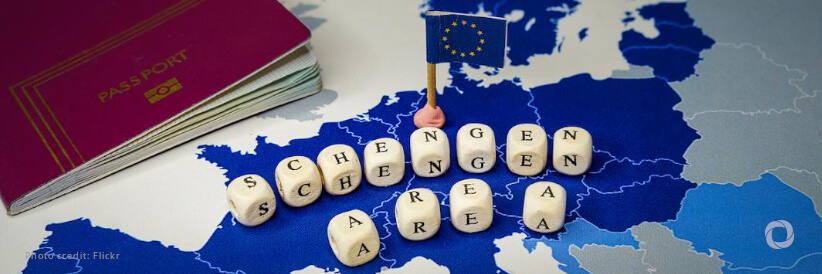The Commission reports on the State of Schengen over the past year and sets the priorities for the year ahead. The Schengen area has evolved into the world’s largest free travel area. Guaranteeing smooth and secure travel to a population of almost 450 million people, the Schengen area is essential for the European Union’s competitiveness.
In 2023, Schengen has remained strong and remains the most visited destination in the world. Over 10 million Schengen visas were issued, and more than half a billion passengers visited the Schengen area, reaching 92% of pre-pandemic 2019 levels. This has significantly contributed to the EU economy, as tourism contributes close to 10% of the EU’s GDP and provides jobs to about 22.6 million people.
State of Schengen
The 2024 State of Schengen reports on the achievements, challenges, and developments in the Schengen area during the last cycle of 2023-2024. The report shows that the Schengen rules are well applied, although there are some implementation gaps:
- A reinforced legislative framework, starting with new rules adopted on the Schengen Borders Code, the Advance Passenger Information Regulation, and the Directive on Information Exchange between law enforcement authorities. Following the adoption of the revised Schengen Borders Code, Member States, in close cooperation with the Schengen Coordinator, will work to put in place the new measures, including police cooperation, to phase out long-lasting internal border controls.
- An integrated Schengen governance framework, with a strengthened role of the Schengen Council. This is done through a more effective use of the Schengen cycle tools, including the Schengen Evaluation and Monitoring Mechanism, Schengen Scoreboard, and the Schengen Barometer+. The Schengen Barometer+ brings together data and intelligence available at the EU level, and it currently shows that data gathering is fragmented across the EU. The Commission will continue to work towards more complete data analysis in close cooperation with the EU agencies and Member States.
- Historic steps to complete the Schengen area with Bulgaria and Romania, starting with lifting controls at air and sea borders as of 31 March 2024. A further Council Decision is needed for the lifting of checks at the internal land borders with Bulgaria and Romania.
The report also highlights the progress made in the use of alternative measures to controls at the internal borders in line with the Commission Recommendation of November 2023. Building on the work of the Schengen Coordinator, the Commission calls on Member States to make increased use of reinforced frameworks of cooperation such as cross-border police cooperation in border regions as an alternative to internal border controls.
The Commission also updated the compendium of best practices to provide insights into innovative strategies, tools, and measures that can support national authorities in the implementation of the Schengen rules.
Schengen evaluation
The State of Schengen report builds on the Schengen evaluation and monitoring activities carried out in the Member States 2023. This peer-to-peer mechanism is the cornerstone of a well-functioning Schengen area, enabling timely identification and remedy of shortcomings. To address them, the Schengen evaluation missions identified that an improved application of the Schengen rules is needed, notably by:
- Enhancing the quality of border control
- Stepping up capacities for return, as the overall figures for effective returns remained low
- Maximizing the use of the Schengen Information System
- Removing obstacles to the cross-border exchange of information.
Proposal for a Council recommendations for a strengthened Schengen area
This year, for the first time, the Commission has also put forward a proposal for a Council Recommendation for the next Schengen cycle to facilitate the implementation of priority actions identified in the Schengen report, such as:
- Using the Schengen governance framework to foster a higher level of implementation of the common priorities;
- Boosting the preparedness, security, and resilience at the external borders, including through improved cooperation with third countries;
- Consolidating the digitalization of procedures and systems to increase security and efficiency at EU external borders and within Schengen, as well as intelligence-based decision-making;
- Stepping up the fight against cross-border crime and preventing unauthorized movements;
- Contributing to the more effective functioning of the common EU system for return based on better-integrated cooperation among Member States.

